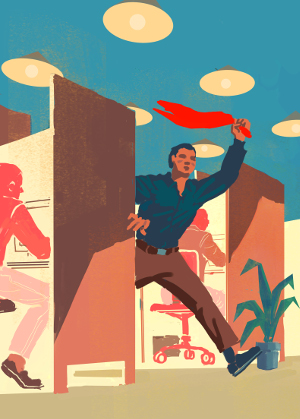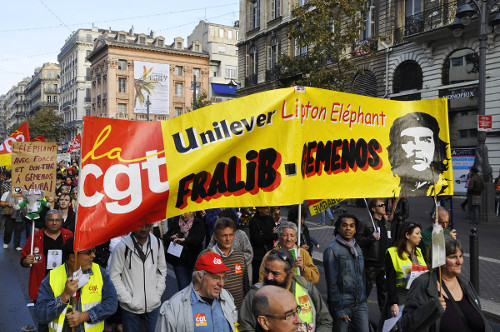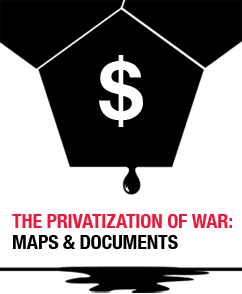Recent years have seen a proliferation of recuperated workplaces around the globe, laying the foundations for a truly democratic workers’ economy.
Workers’ Control in the Crisis of Capitalism

In February 2016, a dozen former workers of a small woodworks plant in the small Greek town of Patrida, some 60 kilometers from Thessaloniki, had had enough. Since 2008 they had been tricked by the owners. With a promise to pay back everything soon, the bosses did not pay the workers their full salary anymore, reduced working hours and announced bankruptcy without making it official. But the situation never improved and the workers never saw their money. Finally, in December 2015, the plant closed. The debt accumulated by the company in terms of unpaid salaries currently stands at around 700,000 euros.
The workers do not believe they will see any of this money. Instead they decided to take over the plant and run it under workers’ control. They contacted the workers of the recuperated factory Vio.Me in Thessaloniki asking for support. The workers from Vio.Me came and helped to build a struggle and restart production as soon as possible. They want to switch production to benches and sales booths for markets and kiosks—all products needed by common people and their communities. The workers are now getting in touch with cooperatives and collectives all over Greece and organizing and participating in mobilizations.
A Widespread Phenomenon
The workers in Patrida are doing the same thing thousands of workers have been doing over the past few years of capitalist crisis all around the world. Workplace recuperations became most visible and best known around the takeovers in Argentina in response to the crisis of 2001-‘02, when they became a widespread phenomenon. In early 2016, there were approximately 360 worker-recuperated companies in Argentina, involving some 15.000 workers; at least 78 worker-recuperated companies employing 12.000 workers in Brazil and almost two dozen in Uruguay. In Venezuela there are several dozen worker-recuperated companies, some managed jointly by workers and communities, and a handful have emerged in Mexico, India and Indonesia. In the course of the contemporary crisis, some 60 workplaces were recuperated in Argentina, two dozen in Venezuela, and a few in Italy, France, Greece, Bosnia, Croatia, the US, Egypt, Turkey and in Tunisia.
Workplace occupations, company takeovers and struggles for workers’ control are not new phenomena. Worker initiatives for control of their companies have historically appeared in situations of economic, political or social crisis, in socialist, national and democratic revolutions, under government-proclaimed socialist and in capitalist contexts, at times of peak production and in stages of restructuring or decline. Throughout history, under every form of political system and government, everywhere in the world, workers have struggled for participation in decision-making processes at work, and have tried to develop forms of co- and self-management, or workers’ control.
Even without previous experience of forming workers’ councils, collective administration—whether by means of assemblies or other mechanisms of direct democracy and horizontal relations—has often appeared as an inherent tendency of the worker base. And workers have proven that they can run factories under their control in most industries, including metal, textile, ceramics, food processing, plastic and rubber, print shops and others, as well as workplaces in the service sector, such as clinics, education facilities, media, hotels and restaurants.
A Liberating Experience
What clearly emerges from the legacy of workers’ control, both historic and contemporary, is its liberating character in transforming a situation of capitalist alienation and authoritarian control into one of democratic practice. Workers in Argentina and in France might face very different conditions, but the essence of their struggles remains the same: opposing oneself to the capitalist process of production—the backbone of any contemporary society—and building, by means of councils and self-management, elements of a future classless society.
In this context it is important to underline that this endeavor is undertaken by common workers and communities. As the Argentinian researcher Andrés Ruggeri points out:
In a worker-recuperated company there are all the workers who used to be in the company. That includes anyone from the leftist vanguardist convinced of going straight against capital to the one who yesterday voted for the first time, who was the employers’ best friend. The conclusion is that self-management does not need vanguards—everyone can be part of a process of self-management.
As Jeremy Brecher stressed in a 1973 article:
Workers’ councils do not possess any secret quality that makes them by virtue of their form, revolutionary. They do, however, have several characteristics that make them different from unions. First, they are based on the power of workers who are together every day and exercise continuous power over production. Second, they are directly controlled by the workers themselves, who can recall their delegates at any time. Third, they follow the actually-existing organization of the working class in production, rather than dividing it along lines that quickly become obsolete, as has happened over and over again in the history of unionism.
Workers taking over a workplace or struggling for workers’ control usually find themselves confronting not only private entrepreneurs, capitalist structures and company administrations, but also union sectors and governmental institutions. Almost all the historical experiences of workers’ control have inevitably collided with political parties, unions and state bureaucracies, whether in the Russian Revolution, Italy in the 1970s, Poland in the 1950s and 1980s, or in present-day Argentina, Venezuela, Greece or India, to name but a few examples. On the other hand they usually have the support of local communities, solidarity structures and other worker-controlled workplaces.
Worker-controlled workplaces work differently from common capitalist workplaces: the social relations change, the labor process changes, often the products themselves change. Nevertheless, the pressure of the capitalist market is immense and often the workers have to compromise somehow, as they cannot completely avoid engaging with the market.
Although there is no doubt that the inevitable interactions with the capitalist environment have provoked severe contradictions and complications for companies under self-management and are also often a source of internal conflicts, they have also proven to be more long-lasting than many common capitalist companies. In the case of Argentina, of 205 worker-recuperated companies studied in 2010, only six had shut down at the end of 2013 while 63 new worker-recuperated companies had been created. And they did not only survive economically, but also continued to follow their political orientation of democratic decision-making and equality between workers.
An Alternative Value-System
Workplaces under workers’ control do not follow an internal capitalist rationality. Instead, they produce and try to follow their own set of values as much as possible. They do so even if they know very well that these values does not correspond to a strict entrepreneurial logic, as Ernesto from the worker-controlled print shop Chilavert in Buenos Aires states:
We also feel the pressure here—we live from our work and have to, so every hour of our work-time that we decide to use in order to militate in some type of social question is lost time from the capitalist point of view; it is money you lose because you do not earn it. That is what you learn when you are little, that is what everyone tells you. So there is a constant systemic pressure to incorporate you, to absorb you. First the system rejects you, but once it sees it cannot kill you, it includes and transforms you into something that can be bought and sold.
Most workplaces under workers’ control consider solidarity with other struggles, especially with new recuperations, as a central part of their work-time. Almost all workplace recuperations have had support from other recuperated workplaces. Usually they are connected to other recuperated companies, but also to more militant cooperatives and sectors of the solidarity economy. The connections and forms of cooperation are political but also economic. If possible, worker-controlled companies prefer to enter business relations with other worker-controlled companies.
Most worker-recuperated companies also maintain contacts with other movements, political or social organizations, or the local neighborhood. Almost all worker-recuperated companies engage in political, social and cultural activities, and 39 percent even offer permanent space to cultural centers, radio stations, day-care facilities, educational facilities and other services and activities. The more recent the recuperations are, the more they connect with other movements. This is also were the force of the worker-recuperated companies comes from.
What Andrés Ruggeri describes for Argentina can be extended to most other recuperations around the globe:
One of the most interesting aspects of worker-recuperated companies is their relation with the communitarian, with the social, and that is what we are talking about when we say that none of the recuperations is recuperating itself alone. It is all about the movement, as there has been a lot of activism and militancy surrounding these recuperations. [There is] a much bigger movement with social links and social networks built around every recuperated company and around recuperated companies as such. [This movement] is very broad and very strong, it’s changing the very meaning of the companies. If the workers recuperate a company all alone, if they turn it into a cooperative and so on, no matter how radical the internal process is, if it is a company with only economic activities it would not have the transformative potential it has with the whole network surrounding the movement.
As Gigi Malabarba from the WRC RiMaflow in Milan, Italy, states:
We can win if we are part of a larger struggle and increase tenfold and a hundredfold experiences such as these, to nurture the idea that another economy is possible. If the economy of the bosses is in crisis, we need to develop a different idea of economics.
The “different economy”, an economy based on the needs and desires of workers and communities is not only experimented with and developed in praxis, but the worker-recuperated companies also meet regularly with other recuperated workplaces, workers’ cooperatives and labor researchers in order to discuss and exchange experiences around the “workers’ economy.” Continental and world meetings are taking place every two years. The idea for this came from Argentina, where several meetings of this kind have been organized during the past years. Starting at a national level, by now already seven regional meetings for Latin America and four world meetings have taken place.
 In 2014, the first North American meeting and the first European and Mediterranean meeting of “The Economy of the Workers” were held. The European meeting took place in the recuperated factory Fralib near Marseilles. Some 200 people attended the meeting, among them activists, workers from five recuperated factories in Europe and one in Argentina, and researchers from Europe, Mexico, Brazil and Argentina. The idea behind these meetings is to create a self-organized space to debate the common and different challenges the recuperated companies face, and how they can use these different experiences to build a network among themselves and with other alternative, self-organized and democratic forms of production and self-administration to create a new economy at the service of workers and communities, and not vice versa.
In 2014, the first North American meeting and the first European and Mediterranean meeting of “The Economy of the Workers” were held. The European meeting took place in the recuperated factory Fralib near Marseilles. Some 200 people attended the meeting, among them activists, workers from five recuperated factories in Europe and one in Argentina, and researchers from Europe, Mexico, Brazil and Argentina. The idea behind these meetings is to create a self-organized space to debate the common and different challenges the recuperated companies face, and how they can use these different experiences to build a network among themselves and with other alternative, self-organized and democratic forms of production and self-administration to create a new economy at the service of workers and communities, and not vice versa.
There is no doubt that recuperated workplaces are gaining more visibility and takeovers are increasingly becoming an option to be considered in workers’ struggles. Given that the financial, economic, political and social crisis of capitalism that generated the current recuperations still persists, it is likely that the takeovers by workers will continue.
Featured illustration by Mirko Rastić.
Related Links:
























